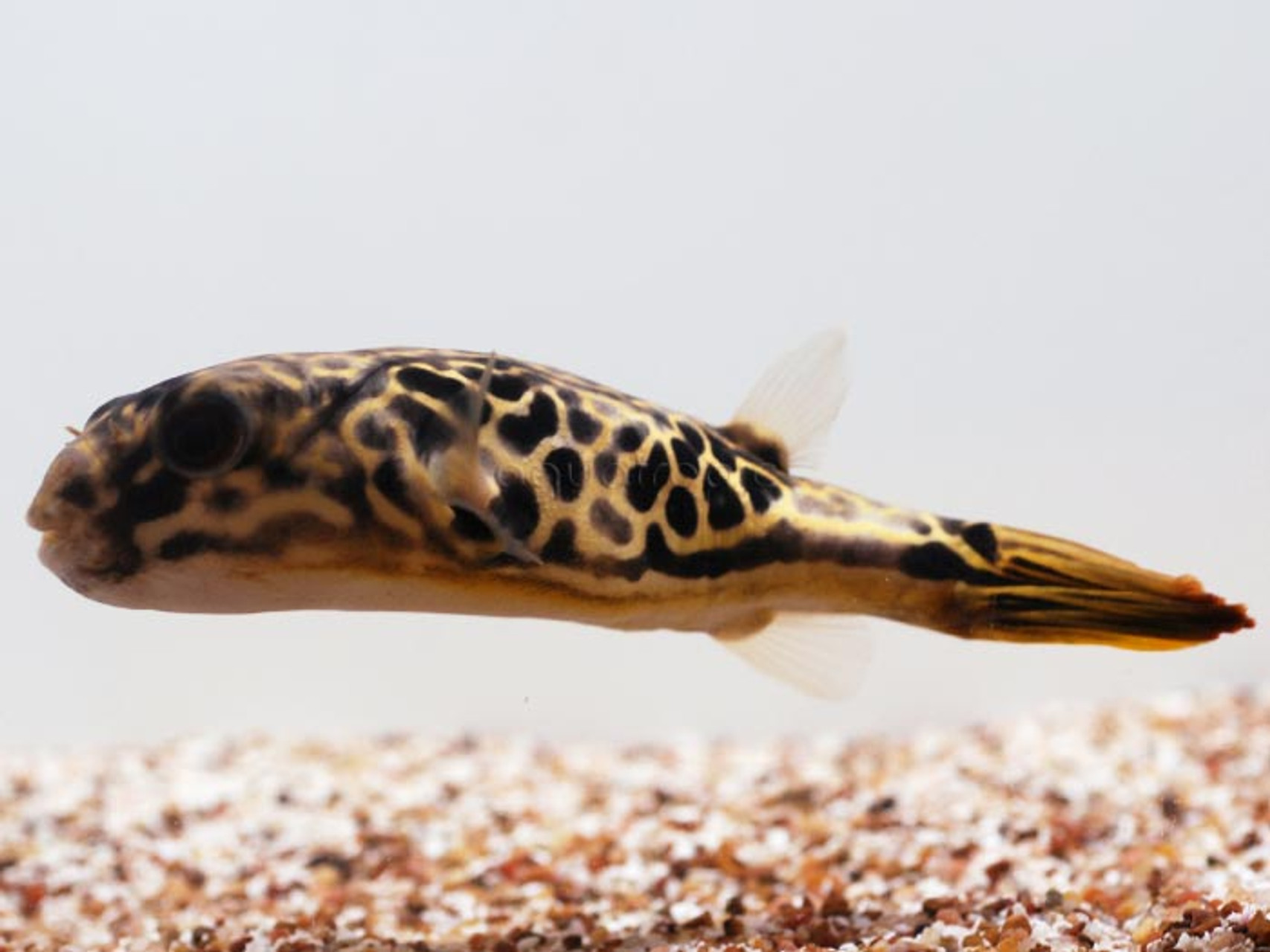Mbu Pufferfish (Tetraodon mbu)

For freshwater aquarists, there is no pufferfish quite so impressive as Africa’s Tetraodon mbu. The species can grow to over two feet in length, making it the largest freshwater tetraodontid in the world. It’s beautiful to look at too, covered from head to toe in a gorgeous labyrinthine pattern. The bright orange caudal fin is spectacular in fully grown specimens, draping gracefully behind it like a veiltail betta’s elaborate finnage.
In the wild, this species can be found throughout the Congo River Basin, as well as around the shores of Lake Tanganyika and various rivers in Tanzania. It is a true freshwater species and doesn’t require any salt to be added to its water. But one thing this species will definitely require is a gigantic aquarium, somewhere on the order of several hundred gallons. Pufferfishes are atrociously messy fishes, and a species as bulky as T. mbu only amplifies this problem.
Now, despite their inherent cuteness, pufferfishes are mean and pugnacious creatures, and this is especially true for the beastly Mbu. Larger tankmates are generally not tolerated, or, they might be tolerated for a while, but will sooner or later find themselves on the losing end of a fish fight. Within the confines of an aquarium, there is probably no fish that can withstand the aggression of an enraged, two-foot pufferfish sporting a razor sharp beak. And this applies doubly for its own kind… only a single Mbu per tank, please.
However, smaller fishes are often ignored. Public aquariums have been known to house their Mbus alongside smaller Tanganyikan cichlids, like Neolamprologus leleupi or N. brichardi. This certainly makes for an attractive biotope. Others have have success with active groups like Melanotaenia rainbowfishes and Sahyadria barbs.
There’s no guarantee that a hungry and opportunistic pufferfish won’t pick these tankmates off when the chance arises, but a well-fed specimen will be less-inclined to bother. Feed a wide variety of meaty foods, especially those with some crunch to them, as the Mbu’s teeth need to be worn down. Whole shrimp and crayfishes, snails, clams and oysters… these are all excellent choices. Just be sure to have strong filtration to handle the inevitable mess produced.
And, lastly, for those willing to take the plunge and dedicate a large aquarium to this fish, remember that these have a similar temperament as a small child. Destructive boredom can be a common cause for grief, so avoid any decorations or equipment that are easily chewed through… and this especially applies to electrical cords and plastic tubing!
← Photo of the Week - Leopard Red Discus (Symphysodon aequifasciatus)Blue Tetra (Boehlkea fredcochui) →